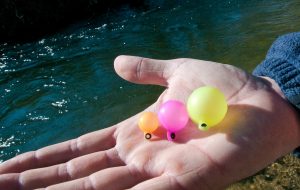Fly fishing often requires finesse, skill, and the ability to adapt to varying water conditions. One essential piece of gear that can make or break success on the water is the strike indicator. Though small, it plays a critical role in detecting subtle bites, especially when fishing with nymphs or in deep, turbulent waters. Choosing the right size of strike indicator is crucial for maximizing success while maintaining stealth and effectiveness. This guide will walk through the key considerations when selecting the best size of strike indicator for fly fishing, ensuring it’s suited for both the season and current fishing trends.
Understanding Strike Indicators and Their Purpose
A strike indicator is essentially a small buoyant device attached to the leader or tippet, designed to signal when a fish has taken the fly underwater. It allows anglers to detect subtle strikes, especially in low-visibility conditions or fast-moving currents. While they might resemble bobbers, strike indicators are specifically designed for fly fishing techniques.
The right strike indicator will help suspend the fly at the correct depth and alert the angler of any changes in tension or movement. This means sizing is critical for achieving the perfect balance between sensitivity and visibility.

Factors to Consider When Choosing the Right Size
- Water Conditions
The type of water being fished significantly impacts which size of strike indicator to use. In calm, clear water, a small indicator is ideal as it provides more stealth without spooking the fish. Conversely, in fast-moving rivers or rough water, larger strike indicators may be necessary to ensure that the angler can see the indicator clearly and that it doesn’t get dragged under by the current. - Fly Weight
The size of the strike indicator must be proportional to the weight of the fly being used. Heavier flies like weighted nymphs or streamers require a larger strike indicator to keep them suspended properly. If the fly sinks too quickly or pulls the indicator under, it signals the need for a larger one. On the other hand, for small flies or dry flies, a smaller indicator can offer the right balance without overpowering the setup. - Wind Conditions
Windy days can make using small strike indicators challenging. Wind may push a tiny indicator out of place, making it harder to detect strikes accurately. In these conditions, opting for a larger indicator can help stabilize the rig and ensure better control, even in gusty weather. - Depth of Fishing
If fishing deep waters or targeting fish in submerged areas, a larger strike indicator might be more appropriate. Deep-water nymphing often requires more buoyancy to keep the fly at the desired depth for longer periods. In contrast, fishing in shallow streams or creeks calls for smaller indicators to maintain the natural drift of the fly.
Popular Sizes and When to Use Them
- Small Indicators (1/4 to 1/2 inch): Best for clear, shallow water and when using lighter nymphs or small dry flies. These indicators provide stealth and subtlety but can be hard to see from a distance.
- Medium Indicators (1/2 to 1 inch): A versatile option, great for medium-depth waters with moderate currents. Ideal for fishing with mid-weight flies or when weather conditions are stable.
- Large Indicators (1 to 2 inches): Suited for fast-moving waters, deep pools, and heavy flies. These indicators offer high visibility and strong buoyancy, though they might spook wary fish in clear conditions.
Seasonal Trends in Strike Indicator Use
As fall fishing trends take hold, anglers targeting trout in colder waters often switch to nymphing techniques, where strike indicators become indispensable. With trout feeding on subsurface insects as hatches diminish, a well-chosen strike indicator becomes essential for detecting subtle bites. Many anglers are also incorporating more colorful indicators as fall foliage blends into the background, ensuring better visibility even as nature’s palette shifts.
Choosing the right size of strike indicator boils down to understanding the specific fishing conditions. By considering factors like water speed, fly weight, and the depth of fishing, it’s possible to make an informed choice that enhances the overall experience. With fall fishing heating up, staying on trend by using the right-sized indicators for nymphing techniques ensures a successful day on the water. Whether going for small and stealthy or big and bold, the right strike indicator can make all the difference in detecting those elusive strikes and landing more fish.
Image: ginkandgasoline





